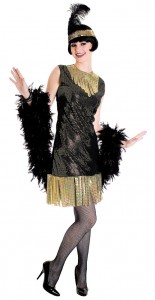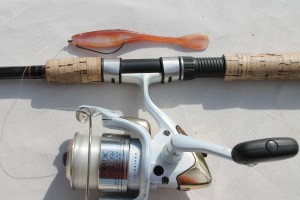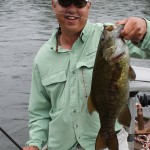No not that kind. Not that it wouldn’t be fun, but I don’t think many fish would get caught. Ever see someone set the hook while wearing heels? It’s a disaster. I’m talking about fishing with a Gambler Flappin’ Shad, or as I call it, “The Flapper”.
It’s no secret that I enjoy catching fish in a variety of ways. Much of my summer is spent chasing smallies on the rivers of Minnesota and Wisconsin, and there is no way I would rather catch them than with a fly rod. On the other end of the smallmouth fishing spectrum for me is fishing with bait. Not to say that I won’t fish with bait, but I have caught enough fish that I personally don’t need to catch one that ate a live minnow. When I have a kid or beginner in the boat—different story—I want them to have their rod bent!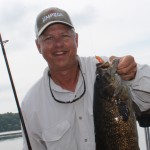
So, fly fishing is at the top end of the smallie spectrum, bait is at the bottom. But a lot of what I do falls in between. Casting “chunk-and-wind-it-in” baits like spinnerbaits and crankbaits are very consistent producers, and don’t require much thought or effort to fish—pull one out of the box, tie it on, chunk and wind. Try it, you’ll catch lots of fish [especially with a Storm “Sub-wart” crankbait, or with one of my top secret spinnerbaits, but that’s another story]. When it’s really windy, or when the bite is tough, I’ll throw them, but it is definitely not preferred.
One of my favorite non-fly presentations is using soft plastic jerkbaits. Compared to a crankbait, these require a high level of skill, both in rigging and in actual presentation. After posting a couple pictures of big smallies that fell for a “Gambler Flappin’ Shad” this summer, I was asked to be more specific about how I rig and fish these baits. It turns out that a disproportionate number of smallies that I catch each year, and a lot the big ones, fall to this presentation.
Now, you can quiz a dozen guys who use these and get a dozen different answers about how to rig them. By all means, experiment to find what works best for you. There are other ways that will work, but you can be sure that what I am going to describe is a proven approach. I am always eager to hear how others rig plastic jerkbaits, I’d love to hear your suggestions.
The first soft plastic jerkbait that went mainstream was the “Sluggo”. These showed up in the late 80’s, became popular in the 90’s and spawned an entire new category of soft plastic “Shad-style” baits. One of the first that I used to use a lot was the Berkley Jerk Shad. I still use these, as they are probably the most readily available bait of this category. They were an instant hit with the local smallies, and also proved successful on largemouths [I used to skip these under docks a lot, pre-Senko], and salty species like Speckled Trout and Redfish down in Texas. Since those early days I have tried many different designs, and the Gambler Flappin’ Shad is one of my top picks, and always the number one pick when looking for a big fish.
From those early years, some things about my rigging has changed, some things have remained constant. I have always preferred a spinning rod, a med-heavy with a fast action, about seven feet long. I mount a big spinning reel on it, a 4000 size. This is critical for fishing with the relatively heavy mono that I still use. Yeah I know, braided line, blah blah blah, it’s more sensitive blah blah blah, gives a better hook set blahbitty blah effin’ blah. I spool with 12 pound Trilene XT or a line with similar DIAMETER [NOT pound test!] which is .015”—I like the way it casts, I like the way it moves the bait, I have all the strength I need, and if I need to break it off on a snag I don’t risk losing a limb in the process [this comes up regularly on the river]. The big reel also picks up line FAST, whether winding down for a hookset, or winding in to make a new cast.
My choice of hooks has fluctuated a bit, I have settled on a wide gap 4/0. The ones that are currently my favorites I just learned minutes ago are no longer available [figures]. They were a VMC model, and I see they make a similar model that I’m sure will work fine, as will similar models from Gammy or Mustad. Originally, I used heavy 5/0 Owner worm hooks[“irons” I called them], but along the way I realized a lighter hook with a big gap was easier to rig, hooked fish better, and put a smaller hole in both the bait and the fish. It doesn’t matter what knot you tie it on with as long as it is a Palomar Knot.
I always rig the bait in the “Tex-posed” style, with the hook point run through the bait and lying flat along its back. Having the bait hang straight once it is rigged is critical—rig one crooked and it will spin, run to the surface, or only go to one side. Get it rigged right and the bait will sink nice and horizontal, and come through the water with an erratic ziggity-zig-zag, with its tail flapping enticingly the whole time. I work the bait by starting with the rod roughly pointing at the lure. I sweep the rod tip towards me along the water surface, usually in about 1 foot pulls. You won’t believe how much that tail will “flap”—it almost buzzes! It puts off enough vibration to call fish in, but when they get close, it just screams “Eat Me!” as the tail flutters on the drop. Experiment with different retrieves and cadences, most of the time I’m doing a twitch-twitch-wait….twitch-twitch-wait….etc. No surprise, most of the bites will come when you “kill it” on the pause. What the bait does in the water is mostly dependent on how you work it. When you get eaten [you will], reel down on the fish and set the hook hard.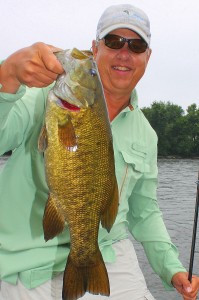 Notice how the hook is buried in this guy’s snoot!
Notice how the hook is buried in this guy’s snoot!
There will be days when for unknown reasons you will miss a lot of bites. Days like this make me question many of my beliefs, and I still lay in bed some nights thinking about a tournament I was in where the fish would not stop eating the Flappin’ Shad, and I could not keep them hooked. [Sidebar—turns out I was using a different mono than I usually did, it was thinner and stretched more. Also, the bag of shads I had picked for the day were of a harder consistency than others. Combine stretchy line with plastic baits that wouldn’t compress and well, lesson learned, pay attention to details]. But stick to the plan, heavy spinning rod, 12 lb. mono, 4/0 hook, Flappin’ Shad rigged straight, and most days you’ll end up well on the right side of plus/minus.
Some other notes….
I have tried to tie a fly to emulate the flapping action using “Sili Skin”, kind of along the lines of a gummy minnow. These were an epic failure, other more patient and talented tiers may have more success.
Not sure that color matters much, be sure to pick colors you like. I mix it up with dull and bright colors, not sure that it matters much to the fish. Chartreuse is always good, and I’ve been working through a couple bags of copper colored ones lately. What does matter is that it is rigged properly!
The Gambler gets a lot of play time with me, another favorite is the Bass Assassin brand “Shad Assassin”. This bait is a little smaller, a little more subtle, and is a great choice in clear water. If you’re missing bites on the Flapper, consider dropping down to the Assassin or other smaller bait
Flappin Shads are fair game for pike and muskies too, just rig with some thin knottable wire
I have no affiliation of any kind with Gambler, but here is a link to their website

